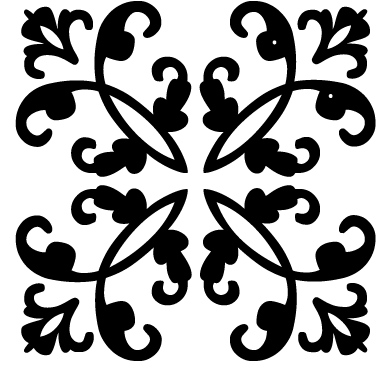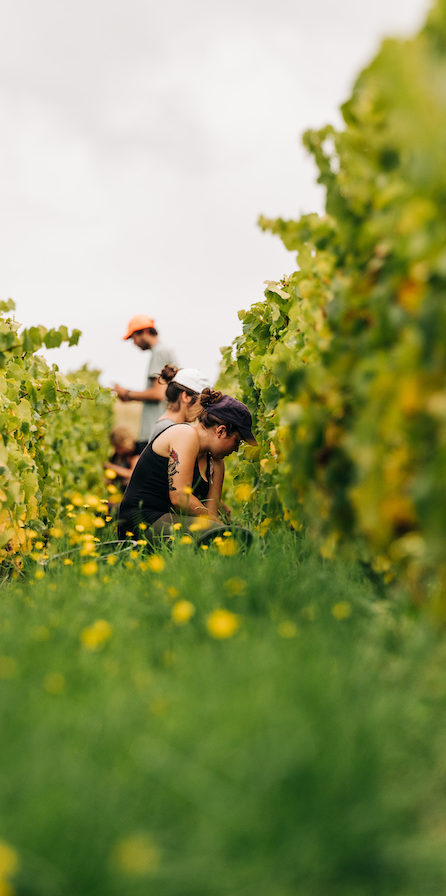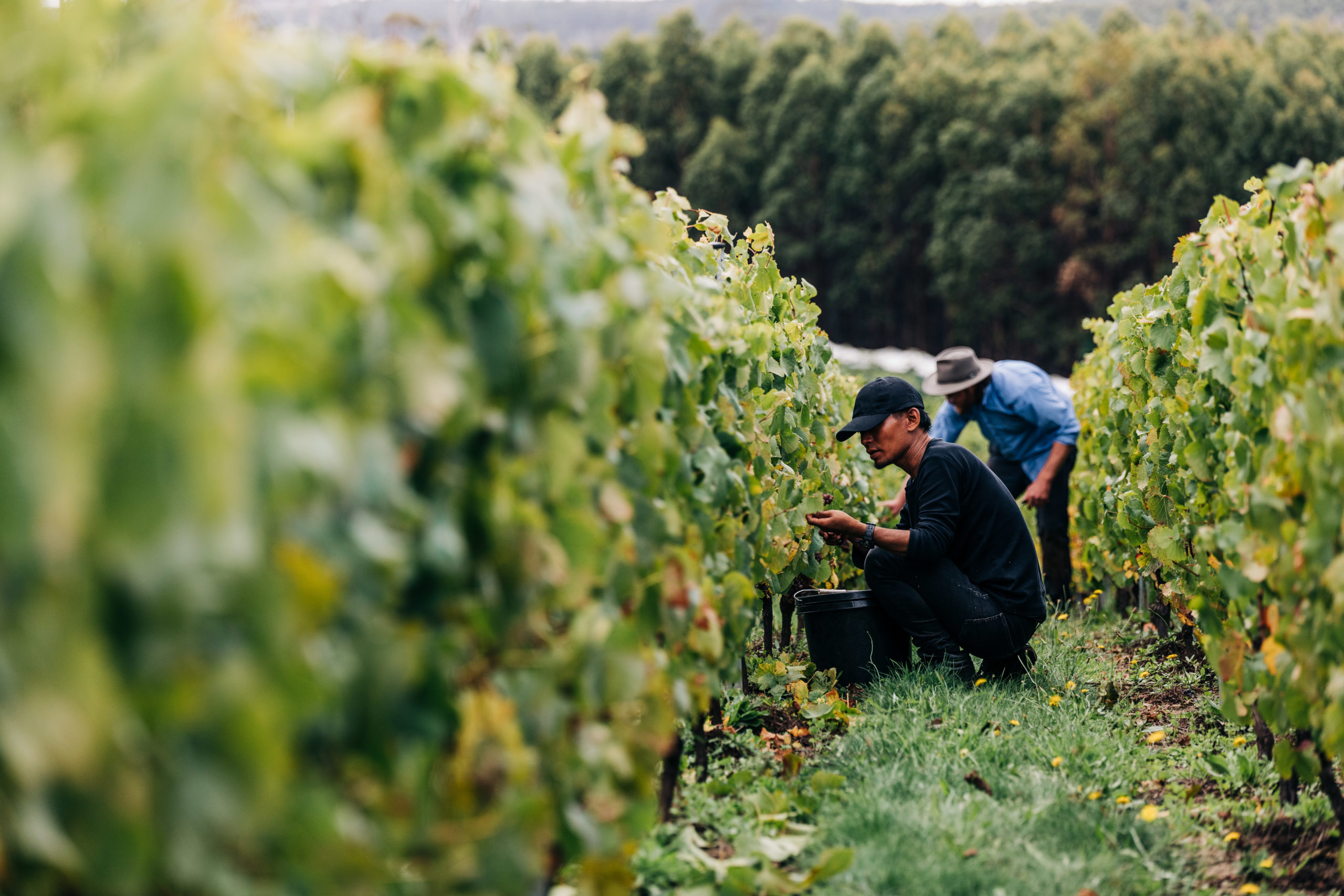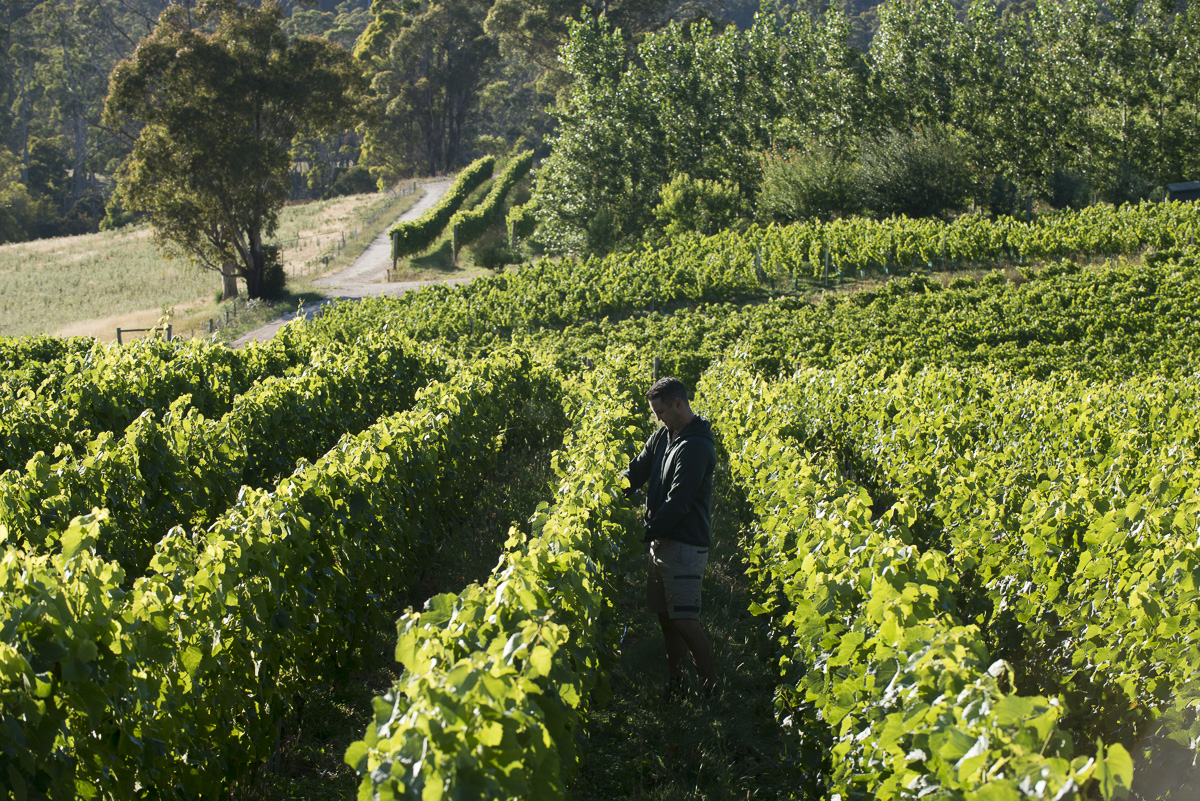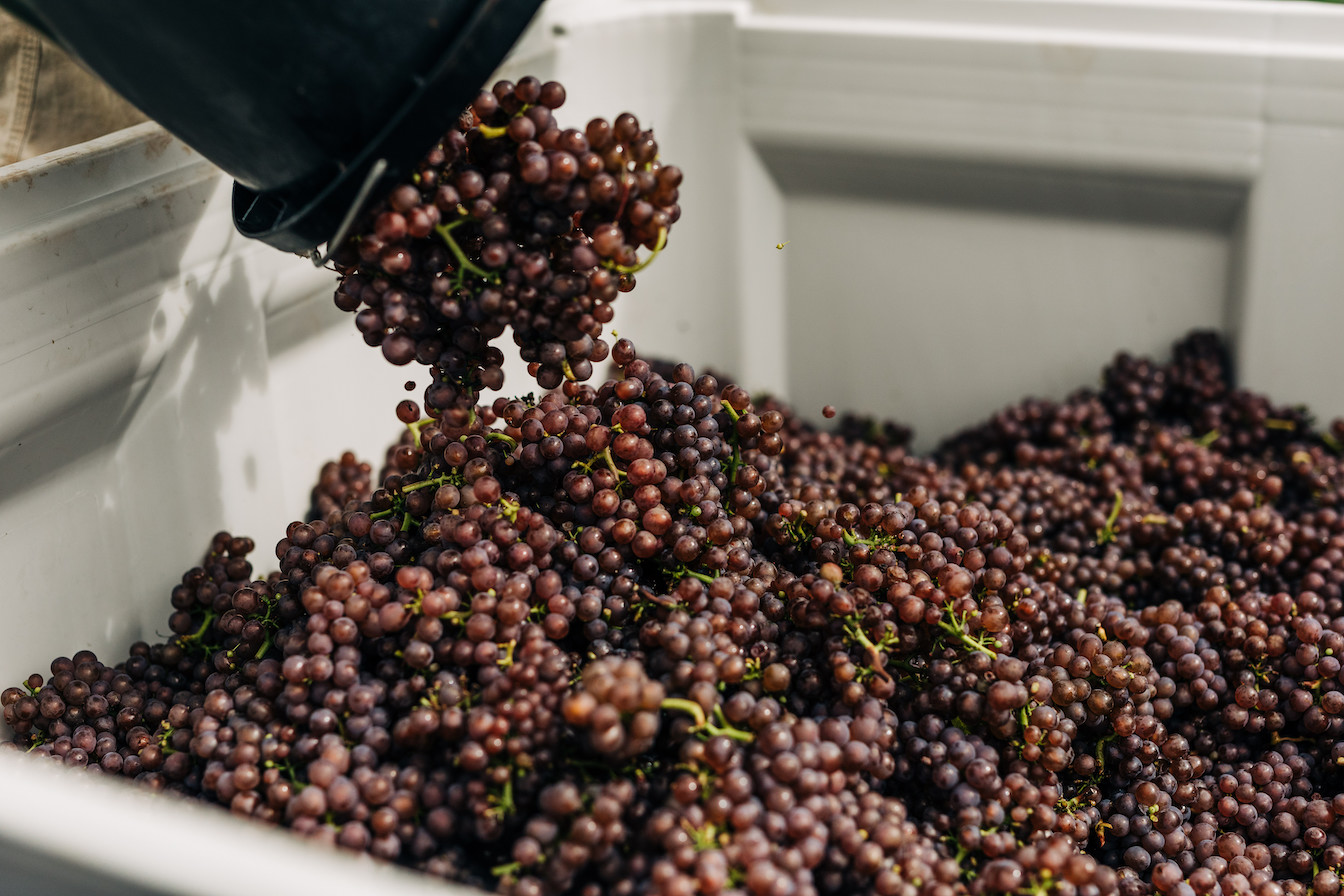Our 4.3 hectare vineyard lies approximately 80-100 metres above sea level on a frost-free site, 5km inland from Bass Strait. With a strong maritime influence, our grapes enjoy a long even growing season, moderated by the prevailing north-westerly sea breezes.
The vineyard has two distinct volcanic-based soil types: deep red ferrosol soils, and ironstone gravels with a layer of micaceous quartz siltstone 30-60cm below. Both soils contain large amounts of quartz and basalt, and hold moisture well which allows us to dry-grow our vines. The 4 distinct vineyard blocks face North-East and East which warms the soils early in the day and gives the vines full sun exposure to ensure optimal ripeness and flavour in our grapes.
Blocks are planted at a high density of 1.3m between rows x 1m between vines (7700 vines/ha) with some sections planted at 1.1m x 0.75m (10250 vines/ha). Our fruiting wire is positioned 40cm off the ground with an overall canopy height of approximately 1.2 metres. Each vine is pruned using Poussard technique to a single 8-10 bud cane therefore the yield per vine is significantly low (currently averaging less than 500 grams per vine).
So, what is high density planting and why do we do it?
Our vineyard has been modelled on vineyard plantings in Burgundy, the homeland of exceptional Chardonnay and Pinot Noir. Burgundy vineyards are generally planted at 1m wide row x 1-metre-wide vine spacings equating to 10,000 vines per hectare. Our philosophy at Sinapius is that in order to make great wine, yields per vine need to be low to ensure maximal intensity, concentration and expression of the site is evident in the wines.
The vineyard work in high density planted vineyards is back breaking, labour intensive, and, undertaken mostly by hand. This includes pruning in winter through to de-suckering, shoot positioning, summer pruning, leaf plucking, trimming, fruit thinning at bunch closure as well as netting to protect the grapes from the birds.
In 2019, we imported a narrow (90cm wide) crawler tractor from Italy. The Geier allows for easier access within our narrow rows and ensures minimal compaction to the soil. With the use of Braun undervine cultivation equipment, we are now able to manage weeds under the vines without the use of herbicide.
We grow a number of different varieties at Sinapius. We have also focused on planting a vast array of Clones which have been selected and planted in different blocks, on differing soil type on the property. This allows for a greater expression of these varieties as each clones offers some subtle variation in characteristics, resulting in more complexity in the finished wines.
Varieties planted in detail:
- Pinot Noir – Clones MV6, 114, 115, 667, 777, Abel, D4V2, UCD5, 386, 521, G5V15, D2V5, D5V12, Cortaillod
- Chardonnay –Clones 548, 76, 95, 96, 809, 277, Mendoza, Penfolds 58, I10V1, 352, 124
- Pinot Gris – Clones 457, D1V7, D1V10
- Grüner Veltliner –Clone F6V16
- Pinot Blanc –Clone 54
- Gewurztraminer – Clone 457
- Riesling –Clones GM110, GM239, 810, 812, 813, 68 Trier, 356 Trier, 156, N90
- Gamay –Clones 222, 284, BGW19, H200A
- Ribolla Gialla
